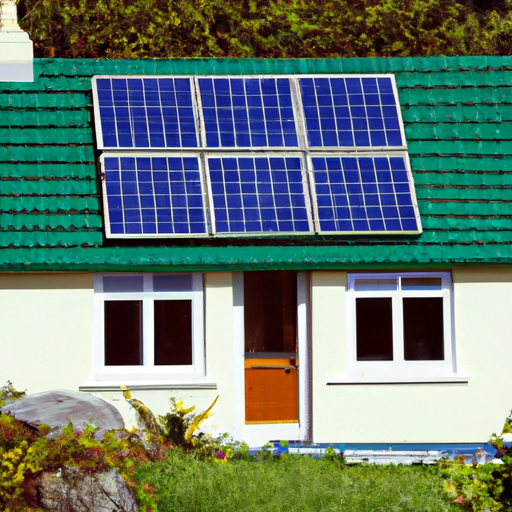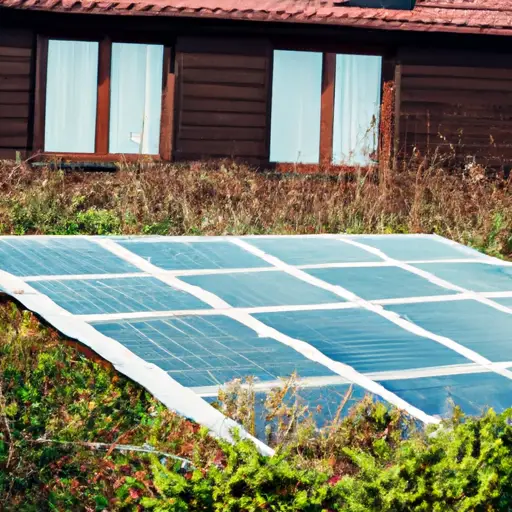Have you ever wondered what it would be like to live off the grid? Living off the grid means that you don’t rely on public utilities like electricity, water, and the internet. Instead, you generate your own power and find your own sources of water. It’s a sustainable lifestyle that allows you to be independent and self-reliant. In this article, we’ll explore the world of off-grid living and learn about how people make it work.
One of the most important things about living off the grid is finding ways to generate your own power. Instead of using electricity from the power company, off-grid homes use renewable energy sources like the sun, wind, and water. They have special equipment, like solar panels and wind turbines, that can turn these natural resources into electricity. It’s pretty cool, right? We’ll talk more about these energy sources and how they work later in the article. But first, let’s talk about some other important things to consider when building an off-grid home, like where to put it and what resources are available.
Off-Grid Living: A Sustainable Lifestyle for Independence and Self-Reliance
Off-grid living is a lifestyle that promotes sustainability and independence by reducing reliance on public utilities. In an off-grid home, you generate your own power through renewable energy sources like solar, wind, and hydro power. This not only allows you to save on utility bills, but also helps protect the environment by reducing your carbon footprint.
When it comes to building an off-grid home, there are several factors to consider. First, you need to carefully choose a suitable location. Assess the available resources in the area, such as sunlight for solar panels, wind for wind turbines, and access to water sources. Evaluating the environmental conditions, such as the climate and weather patterns, is also important to ensure your home can withstand the elements.
Once you have found the perfect location, it’s time to design your off-grid home. There are various types of off-grid homes to choose from, including cabins, tiny houses, earthships, cob homes, shipping container homes, and other natural homes. Each type has its own unique features and benefits, so consider your needs and preferences when making a decision.
Incorporating energy-efficient features into your home design is crucial for maximizing your energy production and minimizing waste. This includes using high-quality insulation, energy-efficient windows and doors, and incorporating passive design strategies to keep your home comfortable year-round. Another important aspect is designing for optimal solar panel placement, ensuring that you can capture as much sunlight as possible to power your home.
Renewable energy sources play a key role in off-grid living. Solar power is a popular choice for off-grid homes, as it is a clean and abundant source of energy. By installing solar panels on your roof or in your backyard, you can harness the power of the sun to generate electricity for your home. Wind energy is another viable option, especially if you live in an area with consistent wind patterns. Wind turbines can be installed on your property to generate electricity. Hydro power, which harnesses the energy of flowing water, is also a great option if you have access to a stream or a river.
Water systems are essential for self-sufficiency in off-grid living. Collecting and storing rainwater is a common practice among off-grid homeowners. Rainwater can be harvested from rooftops and stored in tanks or cisterns for later use. Well water is another option, especially if you live in an area with a high water table. However, it’s important to regularly test the quality of your well water to ensure it is safe for drinking and household use. Implementing water purification systems is also recommended to remove any impurities and contaminants.
Waste management is another crucial aspect of off-grid living. Implementing composting toilets is a sustainable and eco-friendly solution for managing human waste. These toilets break down organic materials into compost, which can be used as fertilizer for gardens. Recycling and reusing waste materials is also important to minimize your impact on the environment. Building greywater recycling systems allows you to reuse water from sinks, showers, and laundry machines for irrigation purposes.
Food production and storage are key components of self-sufficiency in off-grid living. Establishing home gardens allows you to grow your own fruits, vegetables, and herbs, reducing your reliance on grocery stores. Implementing vertical farming techniques, such as using raised beds or trellises, maximizes space and increases crop yields. Sustainable food storage methods, such as root cellars or canning, help preserve your harvest for long periods of time.
Living off-grid offers numerous financial and environmental benefits. Although upfront costs for renewable energy systems and water systems can be high, they generally pay for themselves over time through long-term cost savings. By generating your own power and reducing your reliance on fossil fuels, you can significantly reduce your carbon footprint and help combat climate change. Off-grid living also promotes sustainable living practices, such as conservation and mindful consumption.
When it comes to essential technologies and appliances for off-grid homes, choosing energy-efficient options is crucial. Energy-efficient appliances, such as refrigerators, washing machines, and LED lights, consume less electricity and help conserve energy. Battery storage systems are essential for storing excess energy generated by your solar panels or wind turbines for use during periods of low energy production. Optimizing heating and cooling systems, such as using energy-efficient HVAC systems and installing proper insulation, helps keep your home comfortable year-round.
Navigating regulations and permits is an important step in the process of building an off-grid home. It’s essential to understand building codes and regulations in your area to ensure compliance with safety standards. Obtaining necessary permits and permissions from local authorities is also crucial to avoid any legal issues. Additionally, it’s important to ensure compliance with zoning restrictions to ensure your home is in line with the surrounding community and environment.
In conclusion, off-grid living is a sustainable lifestyle that promotes independence and self-reliance. By carefully evaluating location and resources, designing an energy-efficient home, utilizing renewable energy sources, implementing water systems and waste management systems, establishing home gardens, and choosing energy-efficient technologies and appliances, you can create a truly off-grid and sustainable lifestyle. While there are challenges involved, such as navigating regulations and permits, the long-term financial savings and reduced environmental footprint make off-grid living a worthwhile and rewarding endeavor.





